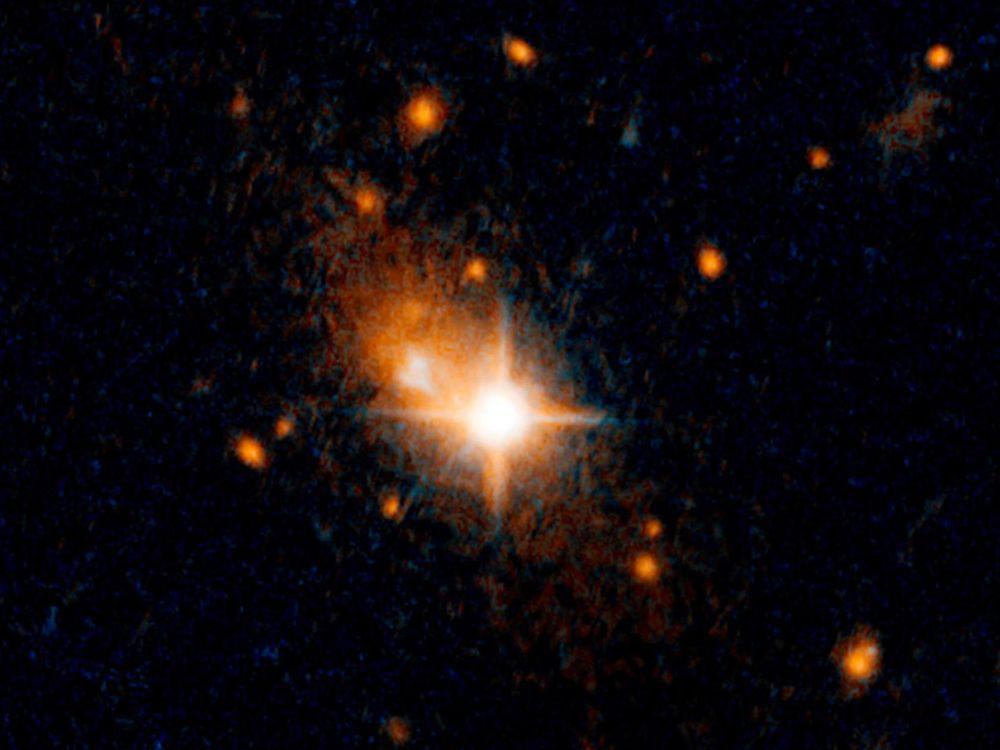Meanwhile, the Hubble image offered a clue about what dislodged the black hole from its galaxy’s centre. The host galaxy bore faint, arc-shaped features called tidal tales, which are produced by the gravitational tug-of-war that takes place when two galaxies collide. This suggested that galaxy 3C 186 had recently merged with another system, and perhaps their black holes merged too.
What happened next, scientists can only theorize. Chiaberge and his colleagues suggest that as the galaxies collided, their black holes began to circle each other, flinging out gravity waves “like water from a lawn sprinkler,” as NASA described it. If the black holes had unequal masses and spin rates, they might have sent more gravitational waves in one direction than the other. When the collision was complete, the newly merged black hole would have then recoiled from the strongest gravitational waves, shooting off in the opposite direction.
“This asymmetry depends on properties such as the mass and the relative orientation of the back holes’ rotation axes before the merger,” Colin Norman of STScI and Johns Hopkins University, a co-author on the paper, said in the NASA news release. “That’s why these objects are so rare.”
